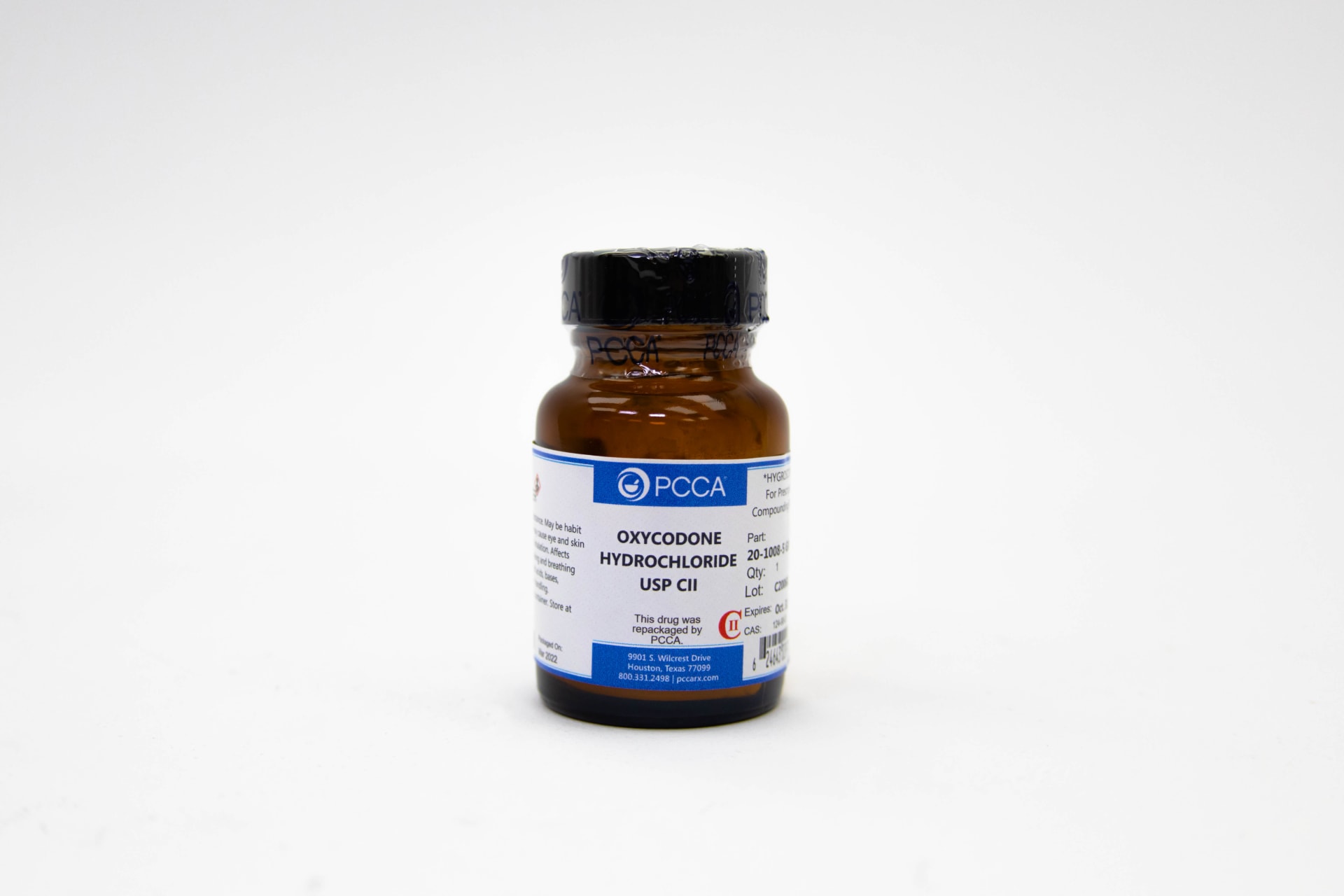Exploring the Various Medical Uses and Results of Oxycodone suffering Administration
Oxycodone, a powerful opioid analgesic, has actually long been a keystone in the monitoring of modest to extreme discomfort. Its efficiency in alleviating various types of pain has actually made it a vital tool for doctor. The intricacies bordering its medical uses and effects go beyond plain discomfort alleviation. Recognizing the complex interaction between oxycodone, the human body, and the potential consequences of its management is crucial for both medical care specialists and individuals alike. Allow's unwind the diverse landscape of oxycodone in pain management to gain a comprehensive understanding right into its energy and influence.

Discomfort Alleviation System of Oxycodone
By binding to these receptors, oxycodone modifies the assumption of discomfort, leading to a decrease in discomfort experience. This activation hinders the launch of natural chemicals entailed in pain signaling, such as substance P and glutamate, while additionally promoting the release of repressive neurotransmitters like gamma-aminobutyric acid (GABA)
Moreover, oxycodone not just modulates pain perception yet additionally affects psychological actions to discomfort. The drug can cause sensations of bliss and leisure, contributing to its high possibility for misuse. Comprehending the exact mechanism of oxycodone's activity on the main anxious system is important for doctor to optimize its usage suffering management while minimizing the threats connected with its potential for dependency and misuse.
Kinds Of Pain Problems Treated
In the realm of discomfort management, numerous types of discomfort conditions gain from the targeted analgesic impacts of medications such as oxycodone. Oxycodone is generally recommended for the therapy of moderate to extreme discomfort, making it a valuable device in managing sharp pain adhering to surgical procedures, injuries, or medical treatments. Additionally, oxycodone is made use of in chronic pain problems such as cancer-related pain, neuropathic discomfort, and musculoskeletal discomfort conditions like osteoarthritis or fibromyalgia.
Moreover, oxycodone is efficient in managing development pain episodes in people currently on continuous opioid therapy. Development discomfort refers to abrupt, intense flares of discomfort that occur regardless of ongoing discomfort management. By offering quick pain alleviation, oxycodone helps enhance the lifestyle for individuals dealing with problems like cancer, where discomfort control is vital for overall health.
In palliative care settings, oxycodone plays an essential role in making sure convenience and dignity for terminally sick people experiencing extreme pain. Its strength and adaptability in dosing make it an important option for tailoring discomfort monitoring to private person needs across a spectrum of discomfort conditions.
Prospective Adverse Effects and Threats
Commonly observed in individuals using medicines for discomfort administration, prospective adverse effects and dangers related to these therapies need cautious consideration and surveillance by medical care service providers. Oxycodone, a potent opioid commonly prescribed for moderate to severe discomfort, can bring about numerous negative effects. Usual side results of oxycodone consist of irregularity, drowsiness, wooziness, and queasiness. These results are frequently workable yet can be annoying for clients. In some situations, more severe adverse effects such as breathing clinical depression, allergies, and dependency might take place, requiring immediate medical focus.
In addition, the lasting use of oxycodone can cause tolerance, where greater dosages are needed to attain the exact same level of discomfort alleviation. This can potentially increase the danger of overdose and dependency - Buy Oxycodone online. People with a history important abuse or mental health and wellness problems are at a higher threat of experiencing these unfavorable impacts
Doctor must thoroughly examine the dangers and advantages of oxycodone treatment for every specific client and check them carefully to reduce possible side impacts and risks connected with its use.
Dose Guidelines and Management
Provided the potential negative effects and risks associated with opioid medications like oxycodone, doctor should develop clear dose guidelines and proper management methods to make sure efficient and secure pain management for individuals. The dose of oxycodone should be embellished based on aspects such as the patient's age, weight, case history, and the extent of pain. Generally, the first dose for opioid-naïve patients is 5-15 mg every 4 to 6 hours as needed for pain. It is vital to start with the most affordable reliable dosage and titrate gradually to attain adequate pain relief while lessening adverse effects.
Doctor need to routinely reassess the client's discomfort levels and change the dosage as necessary. It is essential to keep an eye on for indications of opioid abuse or dependence throughout therapy. Oxycodone is typically available in immediate-release and extended-release formulas, and the dosing timetables vary between the two. Patients ought to be informed on the appropriate management techniques, prospective side results, and the significance of not surpassing the prescribed dose to avoid damaging results.

Person Education And Learning and Tracking
Patients suggested oxycodone for pain management must receive thorough education and learning on proper drug use and have to go through regular tracking to guarantee secure and efficient treatment end results. Client education and learning plays an important role in the risk-free use oxycodone, as it equips individuals to understand the medicine's potential benefits, risks, and negative effects. Medical care service providers need to inform people on the relevance of taking oxycodone specifically as prescribed, preventing alcohol and various other central anxious system downers, and More hints recognizing indications of opioid overdose. In addition, patients must be educated about appropriate storage space YOURURL.com of the drug to prevent misuse or unintended ingestion by others.
Normal surveillance is important to assess the client's reaction to oxycodone therapy, identify any emerging adverse effects or complications, and evaluate the demand for dosage modifications. This tracking may include frequent follow-up consultations, pee medication screenings to keep track of adherence and spot potential abuse, and routine evaluations of the treatment plan to make certain optimum discomfort management outcomes while decreasing the threat of opioid-related damage. By offering comprehensive education and applying normal tracking procedures, healthcare providers can advertise the risk-free and effective use of oxycodone in discomfort administration.
Conclusion
To conclude, oxycodone is a potent opioid medication frequently used suffering monitoring for different problems. Its system of action involves binding to opioid receptors in the mind and spinal cable to minimize discomfort. While efficient in providing discomfort relief, oxycodone is linked with prospective side results and dangers, necessitating mindful dosage standards, administration, individual education, and monitoring to make sure risk-free and effective usage in medical technique.
In the world of pain monitoring, different types of discomfort conditions profit from the targeted analgesic effects of medicines such as oxycodone. Oxycodone is typically suggested for the treatment of modest to severe discomfort, making it a useful device in handling intense pain adhering to surgical treatments, injuries, or clinical procedures. In addition, oxycodone is utilized in chronic discomfort conditions such as cancer-related pain, neuropathic discomfort, and bone and joint pain conditions like osteo arthritis or fibromyalgia.
Breakthrough discomfort refers to sudden, intense flares of pain that happen despite ongoing pain administration. By providing rapid pain relief, oxycodone assists enhance the top quality of life for individuals experiencing from conditions like cancer, published here where pain control is vital for total health.